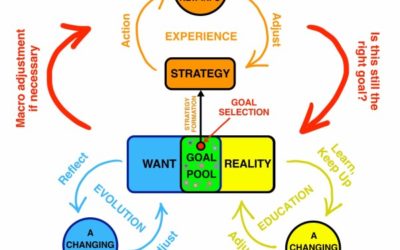
ThriveStreams set out to build a technology platform that would improve mental wellness and healthcare.
We approached the improvement of mental wellness and healthcare in the following ways:
- Active Mental Health Tracking: Encouraged people to take a more active role in managing their mental well-being by logging key mental health data based on the NIHM Life Chart Method.
- Passive Mental Health Tracking: We developed technologies that would enable users to collect key mental health indicators passively from their smartphone. The data collected would be run through algorithms we discovered from existing research conducted at Cornell, Dartmouth, Northwestern, and Oxford Universities in order to generate a mental wellness score.
- Digital Mental Health Companion: We began to develop an interface powered by Artificial Intelligence APIs via IBM Watson. This technology could engage the user conversationally to collect mental health data and deliver mental health coaching content.
We launched our iOS app in October 2014 and officially closed shop in August 2016.
What went right
- We placed huge value on user-centered design, and it paid of. When we started working on our first iteration of the mental health tracker (formerly known as ThriveTracker), we didn’t know how we could reach a stigmatized community. Our focus on our community of Thrivers (aka Users) allowed us to iterate on a solution that was based entirely on user feedback. The product experience improved as a result.
- We injected our mission into the mental health community. ThriveSync (fka ThriveTracker) started out as passion project of two individuals that had first hand patient experience with mental health challenges. We didn’t have any connections in the mental health community. It was our personal story and mission that enabled us to get referral after referral from key thought leaders. We even got involved on a research study funded by the National Institutes of Health.
- We got incredibly amazing people to believe in the idea [READ: SOMEONE NEEDS TO DO AND NAIL THIS MISSION]. We had some of the brightest investors and advisors out there who got the big vision for the company and believed in its potential impact. And I can’t emphasize enough how amazing it was to watch people in our community transform their mental health management. Every day I felt inspired.
What went wrong
- We built a solution looking for a customer with a problem. What started out as a side passion project was a solution to an unvalidated problem. Without knowing the customers’ painpoint, how could we build the “must-have” painkiller? We ended up building a “nice-to-have” vitamin. This made it challenging to formulate a unique value proposition for any potential customers.
- Our Build > Measure > Learn Cycle Time Period was too long. Lean Startup is based on hypothesis generation and collecting data to learn how to move forward. In the beginning and middle, we did not focus on keeping this cycle of learning to fit in a 2 week sprint. It took us 2 years to fail at a previous product, 1 year to build a HIPAA complaint platform we didn’t know if anyone would pay for, 1 month to figure out that Medicaid Health Homes were not a viable customer, and finally got started to focus on a 2 week learning loop. Unfortunately, we were too close to the end of our runway by the time we got our learning loop tight.
- We focused too much on fundraising instead of revenue generation to keep the lights on. In the beginning, we were focused on getting our first customer so that we could show traction and secure funding to continue working on our venture. What we could have been focused on was creating revenue to get to “ramen profitability” as soon as possible. If we could have done that then we might not need funding and could have focused on product-market fit. Having to pay for rent and food is not as good a reason to fundraise… Needing more funds to pump into a vetted sales cycle that generates revenue is the best reason.
Important Takeaways
Pick a Customer > Identify their Problem > Unique Value Proposition > Sell, Sell, Sell > Build to Learn > Ramen Profitability
—
Big thanks to Ryan Bruce Badilla, Carlos Araya, Jessica Kosturko, Katie Colton, Elaine Matthias, Joey Chung, Startup Leadership Program, Brad Weinberg & Jean-Luc Neptune (Blueprint Health), Bill Tan (Transcendent Endeavors), Michael Thompson, Wendy Brennan (NAMI NYC), Thor Ernstsson, Meredith Ressi, Kevin Nadal, Omer Yariv, our friends and families for supporting us on this venture called ThriveStreams.
Related Articles
How to think like a Chef (aka Elon Musk)
Click here to learn how to upgrade your Human Software. OR Click here for a shorter TLDR version 😉 Related Articles
Start With Why
We failed… I started a company in 2012. The company set out to revolutionize behavioral healthcare. Closed the company in 2016. This is my attempt to document and pass on my learnings along the way. My experience spans a range including Entrepreneurship/Product...
On Communication – Part 3
Part 3: The Science From: https://hbr.org/2016/07/what-great-listeners-actually-do Of course, there are different levels of listening. Not every conversation requires the highest levels of listening, but many conversations would benefit from greater focus and...



